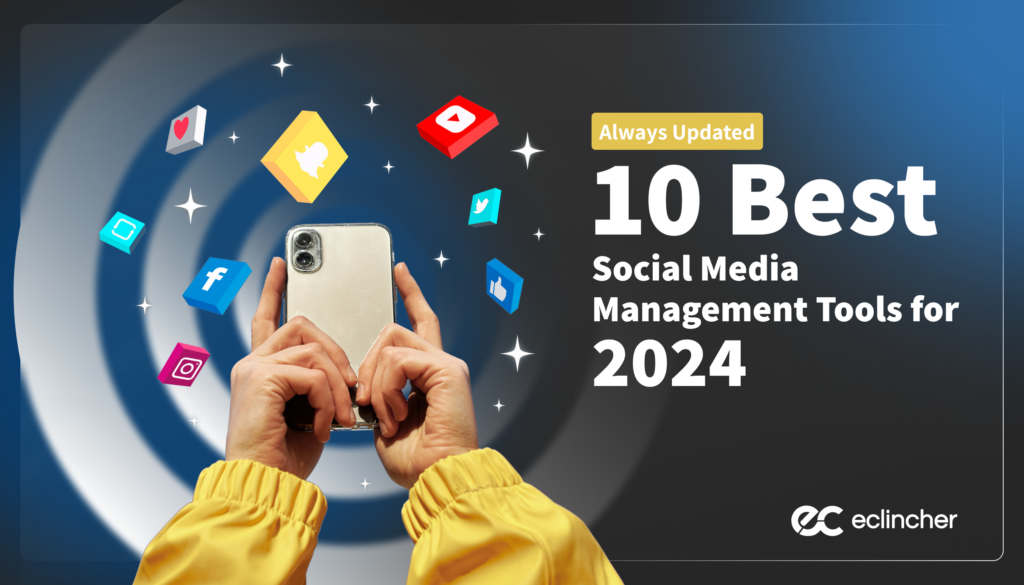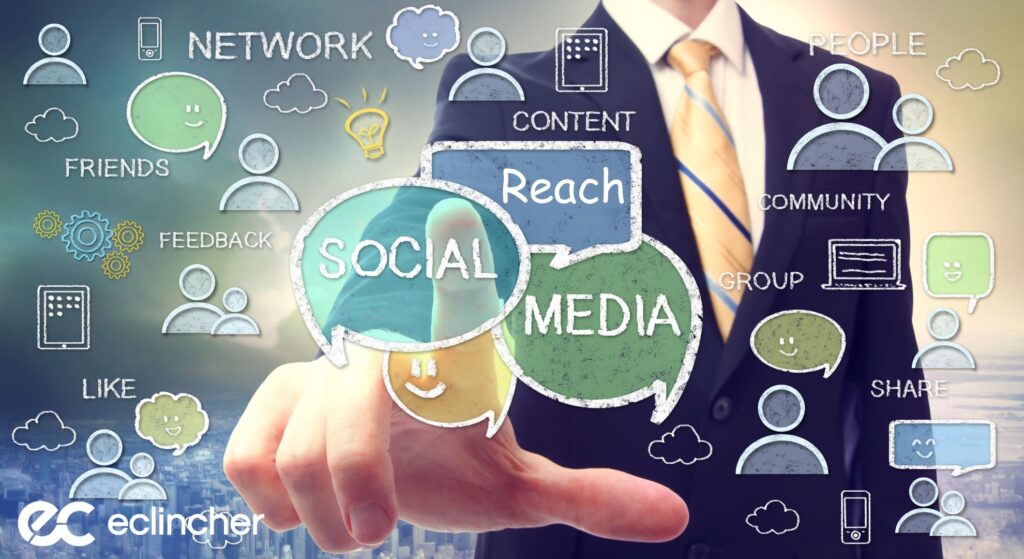With all of the evident benefits that social media marketing can bring; like increased brand visibility and customer engagement,many marketers need to be reminded of proper data security and privacy procedures. If your business account is a hotspot for posts, likes or information about your products and services, it’s crucial to understand the common risks associated with using these social media platforms.
As a social media manager or business owner, you must ensure that you retain optimum control of your social media space and make sure that it does not fall into the wrong hands unexpectedly, or through a gap in your security. This guide is here to advise you on what could disrupt your business’ social media activity and how you can safeguard your accounts, data, and reputation.
What Happens If A Business Doesn’t Take Security Seriously?
Below are just some of the most high-profile social media security incidents, hacks and cyber attacks that have taken place.
- In 2020, hacker Joseph James O’Connor compromised high-profile Twitter accounts, including Barack Obama, Elon Musk, and Bill Gates, to promote a Bitcoin scam. This resulted in significant financial losses for some users. Twitter initiated an investigation and vamped up its social media security criteria as a result.
- In 2018, Cambridge Analytica harvested the data of millions of Facebook users without their consent, leading to a widespread global privacy debate. Facebook was the recipient of huge backlash, regulatory scrutiny and investigations, resulting in policy and data privacy improvements and a settlement of $725 million.
- Networking giant LinkedIn saw data of over 500 million users posted on a dark web forum in June 2021 (90% of its user base), which was the result of data scraping on the site’s API. LinkedIn revamped its terms of service and security protocols accordingly following the scandal.
- The unofficial predecessor to Facebook, MySpace, made headlines in 2016 after over 300 million user accounts, email addresses and passwords were leaked onto the dark web. MySpace invalidated all affected account passwords that were created prior to June 2013, with returning users prompted to authenticate and reset their passwords.
- Former Twitter CEO Jack Dorsey’s account was hacked and used to spout racist rhetoric and misinformation to his four million followers. Similar activity was conducted on the Netflix and Chipotle accounts. The accounts were eventually recovered.
The size and scale of social media hacks and account compromising can vary, but it only takes one malicious actor to tarnish a business’ entire reputation and alienate its consumer base. Not only that, but companies have to deal with a potentially huge fallout if an attack is particularly severe, ranging from loss of customers to hefty fines (if a business is in a highly-regulated industry).
Therefore, it’s crucial for companies to take social media security seriously and ensure their account does not fall victim to a dangerous or reputation-threatening hack.
What Types Of Threats Could Impact Your Business On Social Media?
Phishing And Malware Threats
Phishing scams and attacks are commonly executed on social media. Scammers create fake profiles or send seemingly-innocuous or innocent messages to trick users into clicking malicious links or downloading malware.
Malware such as viruses, worms, trojan horses, and spyware are often spread via social media phishing tactics. Users can unexpectedly download a dangerous software program, which could potentially lock access until a ransom is paid.

Account Compromise And Impersonation
Hackers can create profiles that impersonate or mimic a brand to scam customers or demand payment. This can affect a brand’s reputation if customers are easily fooled into thinking the impersonated account is legitimate, or worse, trying to access their accounts from fake websites listed in the social media account information.
Most of us are guilty of reusing passwords for certain accounts and sites, and social media administrators are not exempt. However, these make easy entry points for hackers to compromise accounts, gain administrator access, and tamper with user permissions.
Unsecured Networks And Devices
Hackers can often snoop on people’s social media activity if they are connected to free public WiFi networks. If you are managing your business account(s) remotely and via public free WiFi, hackers could compromise sensitive data or login credentials.
If a mobile device that has stored business social media account data is lost or stolen, it could be at risk of falling into the wrong hands if unsecured or not backed up with additional authentication steps.
Social Engineering
Malicious actors may try a social engineering tactic to trick people into disclosing sensitive information or providing account permissions.
Phishing is technically an example of social engineering, but sometimes it can manifest in face-to-face interactions or phone calls from imposters making requests that otherwise would appear legitimate.
Brute Force Attacks
Hackers initiate brute force attacks by triggering automated software to guess usernames and passwords repeatedly until the correct one is cracked.
This is where having stronger passwords will come in handy, as, once access is granted, the hacker can then adjust permissions and gain access to all sorts of data.
How Can Businesses Improve Their Social Media Security?
If you are wondering how you can strengthen your business account data and safeguard yourself from becoming a victim of cybercrime, consider taking the following security steps. Many of them are quite simple in principle.

1. Monitor Threats And Suspicious Activity
It’s prudent to monitor all of your business social media accounts regularly for signs of compromise or impersonation. Check messages and comments to see if anything looks amiss, and also enable push notifications for account logins so you can determine the validity of locations or devices.
Use social listening tools to track mentions of your business or CEO name, URLs, products, or slogan in case of any impersonation attempts. Respond quickly to address any misinformation or threats before they proliferate, which, as we know, is fairly quick to materialize on social media.
2. Deploy Dedicated Security Tools And TFA (Two-Factor Authentication)
Many social media management tools lack sufficient robust security features like managed threat detection and response capabilities. For stronger protection, enable two-factor authentication apps (such as Google Authenticator) for your accounts whenever supported. Enable options like text message codes, security keys, email verification messages, or biometrics to validate requests for access. This will act as a sturdier barrier to protect your accounts.
Deploy enterprise-grade password management tools like LastPass, 1Password or BitWarden to generate and store unique, complex passwords for all of your logins to limit or eliminate reuse.
Implement strong internet security scanning tools (which can often be built into an antivirus and anti-malware program) to detect any URLs which do not appear legitimate or that have a questionable history. These tools can check your own site and social media activity for any signs of malicious links or files.
3. Implement Stricter Password Policies And Account Permissions
With the help of password management tools (listed above), you can set a minimum standard of passwords that all employees must meet. For instance, you can stipulate that all passwords must be 12 characters long, including a mixture of upper and lowercase letters, numbers and symbols. The longer and more complex the password, the less likely it is to be compromised.
On top of this, enforce that passwords cannot be used for more than one social media account. Using the same password for multiple accounts means that should one be compromised, the likelihood increases for the others.
Only provide the necessary account permissions and access to employees based on their specific roles and responsibilities. Restrict admin access to executives or managers, and review any changes regularly for any unauthorized access.
Frequently Asked Questions
How can I enhance the security of my social media accounts?
Ensure strong, unique passwords, enable two-factor authentication, and be cautious of suspicious links or messages.
What should I do if my social media account is hacked?
Immediately change your password, review your account settings for any unauthorized changes, and report the incident to the platform’s support team.
What measures can I take to protect my personal information on social media?
Be mindful of the information you share, limit the personal details visible to the public, and avoid accepting friend requests from unknown individuals.
Final Thoughts
Social media platforms present huge opportunities for business growth and visibility, so don’t be dissuaded from using them entirely. It’s crucial that you are looking at social media practically and taking a proactive approach to ensure proper safeguarding of data, technology and awareness. With the right strategy in place, brands can leverage social media’s power with more confidence and less risk.






